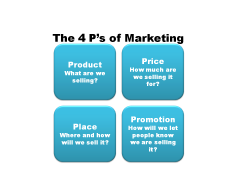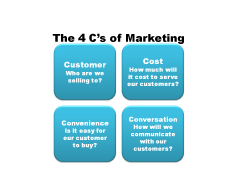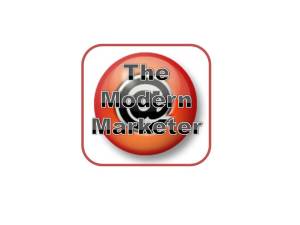 What are the new 4 P’s of Marketing? For that matter what are the old 4 P’s or is it 5 P’s or is it 7 P’s, or even 4 C’s or 7 C’s? And which are relevant? With such an overload of competing Marketing Mixes it’s easy to get confused, however, it is essential to make some sense of this because these inside these models are the foundation of any Marketing Strategy.
What are the new 4 P’s of Marketing? For that matter what are the old 4 P’s or is it 5 P’s or is it 7 P’s, or even 4 C’s or 7 C’s? And which are relevant? With such an overload of competing Marketing Mixes it’s easy to get confused, however, it is essential to make some sense of this because these inside these models are the foundation of any Marketing Strategy.
The Original 4 P’s are Product, Price, Place, and Promotion.This model focused on what the company offers and how to get them to market, commonly called an ‘inside-out’ view. While less fashionable to talk about today, the original 4 P’s still answer the vital questions that any business needs to ask itself (and definitely answer). A very important fifth P, ‘Positioning’ was added in the 1980’s to represent the space that a product occupies in the customer’s mind, and how Marketing Communication can build and hold that position.
 The 4 C’s were first proposed to change the viewpoint to a more customer centric or outside-in view of the market. They are Customer, Cost, Convenience and Communication. This core shift to the customer perspective has, in essence, shifted the balance from product thinking to the customer thinking which really is, in essence, the Marketing concept. Then it follows logically that they are as necessary as the original 4 P’s.
The 4 C’s were first proposed to change the viewpoint to a more customer centric or outside-in view of the market. They are Customer, Cost, Convenience and Communication. This core shift to the customer perspective has, in essence, shifted the balance from product thinking to the customer thinking which really is, in essence, the Marketing concept. Then it follows logically that they are as necessary as the original 4 P’s.
So if we expand these models to either the 7 P’s for Service Marketing which adds Process, People and Physical Evidence (which are really important) or the 7 C’s which adds Corporation, Commodity and Channel (which are more confusing), the question is do we need a ‘new’ 4 P Model? The short answer is a resounding yes!
The new 4 P’s are relevant in the digital and social marketscape. While many new 4 P models have been suggested such as here, here and here, there is no general agreement on which P’s to include so I will give my take on the subject. My “New” 4 P’s are Passion, Purpose, People and Public. Here is the brief explanation:
- Passion – Simply put passion sells. Whether you have passionate customers or employees (hopefully both), that passion is sustaining.
- Purpose – Business needs a stated purpose beyond a simple bottom line, a sense of responsibility towards the whole ‘ecosystem’.
- People – It’s no longer as easy to separate Internal Customers(employees) and External Customers. They are all people who respond to marketing!
- Public – With the rapid adoption of blogs and Social Media giving voice to customers, a business now operates in a very public arena.
- Publish – Ok I know I said only 4 but I couldn’t resist! If we, as marketers, don’t tell our own story, then others will do it for us so “publish or perish”.
So the question at the end is the same as the beginning, which are relevant? From an integrated view, they all are, they can each be relevant at specific points in time for any business. As a Marketer, you decide which P’s or C’s are the most critical to your specific situation and build your strategy around those ‘critical few’ points. With limited time and resources the REALLY critical “C” is Choice, which is the basis of marketing strategy.


